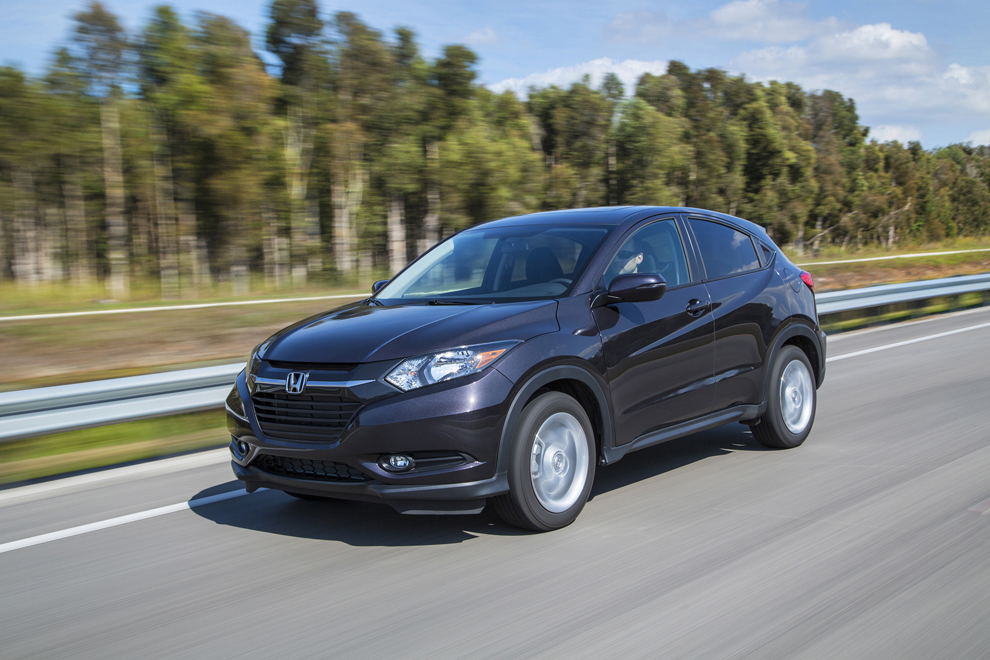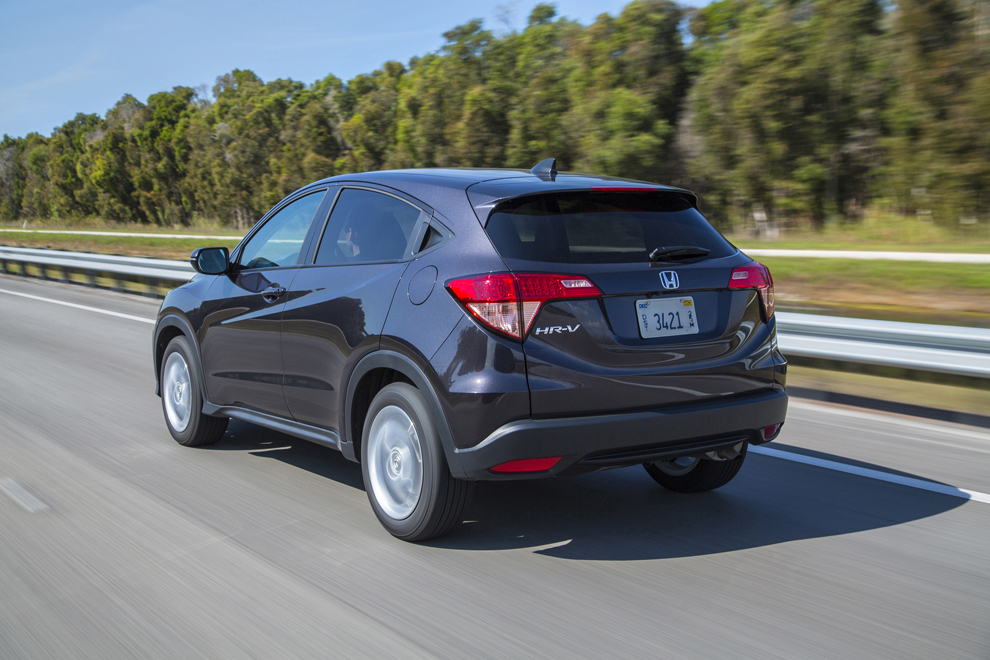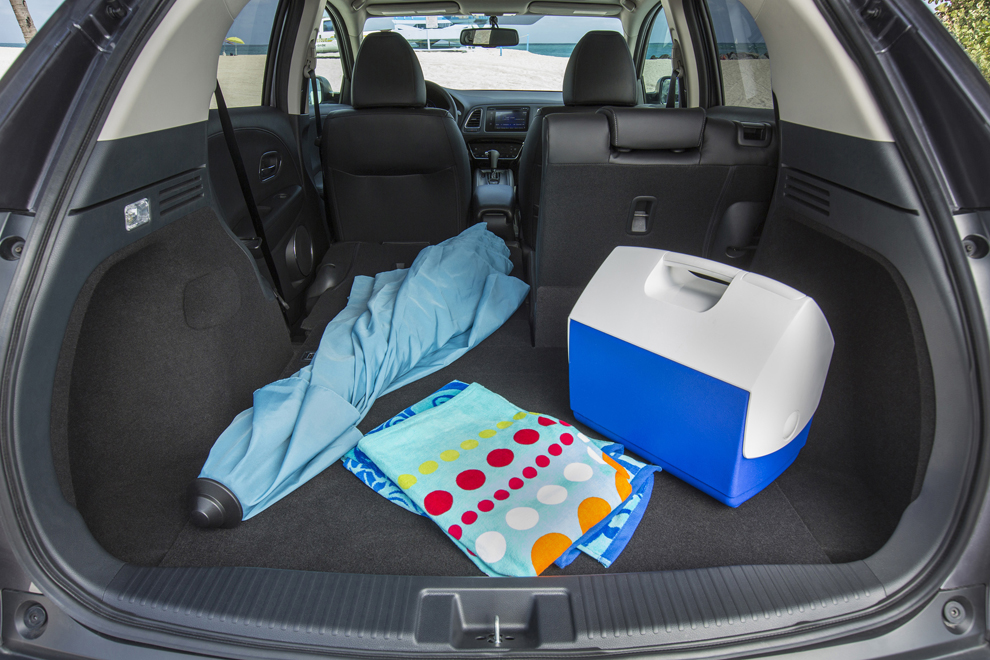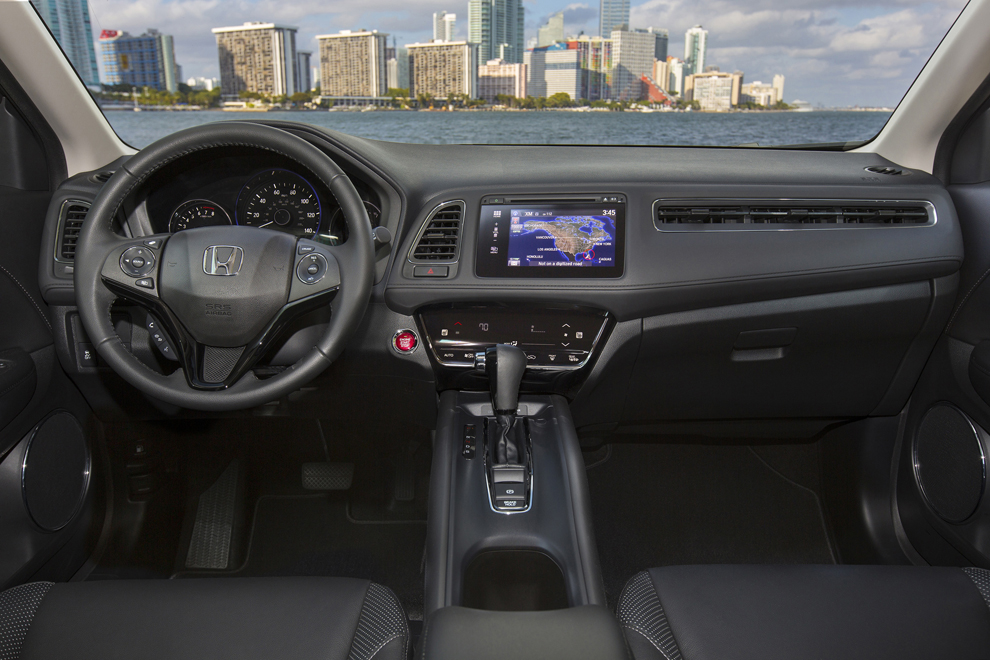The 2016 HR-V, Honda’s new subcompact SUV, doesn’t make a strong impression, but it delivers good fuel economy and a roomy interior.
HR-V prices start at $19,115 for a front-wheel-drive model with a six-speed manual transmission. All HR-Vs have a 1.8-liter four-cylinder engine that produces 141 horsepower.
Stepping up to a continuously variable automatic transmission, or CVT, raises the price to $19,915. The least expensive all-wheel-drive HR-V costs $21,165. All-wheel-drive is available only with the smooth CVT.
I tested a nicely equipped front-drive HR-V EX-L with navigation, Bluetooth phone and music compatibility, voice recognition, front seat side air bags, curtain air bags, leather seats, heated front seats; 60/40 split folding rear seats, 17-inch wheels and more. It stickered at $24,590. All prices exclude destination charges.
The HR-V competes with small SUVs like the Buick Encore, Chevrolet Trax, Fiat 500X, Jeep Renegade, Mazda CX-3, Mitsubishi Outlander Sport 2.4-liter and Nissan Juke. Its prices are comparable to similarly equipped models.
The HR-V’s selling points are a roomy interior and good fuel economy.
The passenger compartment has a high roof, excellent visibility (thanks to large windows) and accommodating front and rear seats. Its passenger volume is in the middle of the pack: more than the Encore, Trax, CX-3 and Juke; less than the 500X, Renegade and Outlander Sport.
The HR-V has the most cargo space, both behind the rear seat and with it folded flat. Despite that, it could use more, and larger, bins and cubbies to store glasses, phones, iPods and the like in the front seat. Road noise is quite noticeable at highway speed.
The interior looks good, but the flat panel and touch screen controls for audio and climate are inconvenient.
The HR-V also uses Honda’s faux-blind spot alert, a distracting video display that projects the view to the vehicle’s right-rear on the touch screen when you indicate a right turn. Honda has moved away from this system on more expensive vehicles. Next step: Drop them across the model line.
The HR-V’s horsepower is at the lower end of the class, topping only the Encore and Trax. It’s got the least torque, 127 pound-feet at 4,300 rpm. That trails the competition by 19 to 50 pound-feet.
The CVT works hard to overcome that disadvantage, but the HR-V does not feel quick, though it’s perfectly adequate around town and on the highway.
The HR-V’s fuel economy ties that of the Mazda CX-3 for best in class. The EPA rates the Honda 28 mpg in the city, 35 on the highway and 31 in combined driving.
The key combined rating matches the CX-3 and leads all others.
The SUV looks big and practical. Its height and large expanses of glass provide good sight lines owners will appreciate.
Automakers are still figuring out how to apply their brand character to the new class of small SUVs. Nissan struck first, and endowed the Juke with odd looks and a sporty persona. Buick went upscale with the Encore. Chevy gave the Trax leading-edge connectivity and iPhone compatibility. Jeep looks and off-road ability distinguish the Renegade.
Send questions/comments to the editors.






Success. Please wait for the page to reload. If the page does not reload within 5 seconds, please refresh the page.
Enter your email and password to access comments.
Hi, to comment on stories you must . This profile is in addition to your subscription and website login.
Already have a commenting profile? .
Invalid username/password.
Please check your email to confirm and complete your registration.
Only subscribers are eligible to post comments. Please subscribe or login first for digital access. Here’s why.
Use the form below to reset your password. When you've submitted your account email, we will send an email with a reset code.